
A Survey of Writers on Contemporary Writers
Listening to writers read and discuss their work at Newtonville Books, the bookstore my wife and I own outside Boston, I began to wonder which living, contemporary writers held the most influence over their work. This survey is not meant to be comprehensive, but is the result of my posing the question to as many writers as I could ask.
ETHAN CANIN
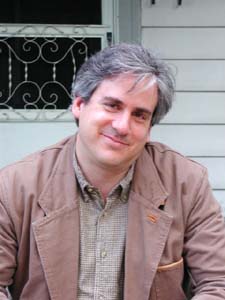
© Red Diaz
BRET ANTHONY JOHNSTON: Before I read Ethan Canin, I didn’t understand what was possible in a short story. I’d read the requisite Hawthorne and Poe, then plenty of Faulkner and Hemingway and even, I think, some Wharton and Dinesen. Of course these writers are important, timelessly so, but their stories didn’t simultaneously break and heal my heart. They didn’t liberate my imagination. They didn’t, and this is paramount, surprise me. Those classic pieces of literature made me feel like a student; I worked to find symbols and fancy themes, and the stories provided ample material. When I read Canin—specifically the story “Pitch Memory” from his magnificent first collection Emperor of the Air—I felt vulnerable, deeply and inescapably human.
The story that did it for me might be called a Canin B-Side. Although “Pitch Memory” appears in his first and astonishingly good collection Emperor of the Air, it isn’t a story people usually cite when they laud Canin’s work. They tend to focus on “The Year of Getting to Know Us” and “Emperor of the Air”; they talk about the glorious novellas that make up The Palace Thief; and they talk about his affecting novels like Carry Me Across the Water and America America. I admire all of his fiction, and I’ve read most everything at least twice, but for me it all comes back to the exquisite little story in which a woman returns home for Thanksgiving and discovers that her mother is stealing again.
In “Pitch Memory,“ as in most of Canin’s fiction, there is a revelation on just about every page. These feel neither engineered nor sentimental; rather, they are inevitable, essential to the characters. And there are other hallmarks of Canin’s fiction at play in the story: the clean and incisive prose; the attention to the passage of time, how the past forms and informs the future; the seamless narration, the profoundly humane lens through which the story is perceived; the way minor trespasses reveal our deepest wounds, the way our infractions betray our various losses and fears; the satisfying structure and the emotion that upholds the architecture; the way the revelations feel so inevitable and authentic that you sense they must have surprised the author, too, that they were born of purest empathy.
But all of this is the language of book reviews and workshops. Here’s what I want to say: I remember that the story made me want to write. I remember marveling at how a story so short could contain such multitudes of emotion. I remember recognizing the characters’ hearts, their longing and coping, their brief hopes for solace. I remember scribbling down the author’s name with a plan to scour bookstores and libraries for more of his work. I remember needing to be somewhere—to my job, actually—but instead of leaving, I flipped back to the first page of the story and read it again.
So I was wrong earlier. Reading Ethan Canin didn’t show me what a short story—what fiction—can do. Reading Ethan Canin showed me what it must do.
STUART NADLER: I’d read Ethan Canin’s short stories years before I ever thought of getting an MFA, and certainly before I’d tried to go to Iowa. I can remember vividly the feeling of reading the first two stories in Emperor of the Air, both of which use similar devices of putting their narrators into the position of hiding out in the story. In Emperor of the Air, the narrator’s gone out to hide in his neighbor’s tree. “In The Year of Getting to Know Us,” which is my favorite story of his, and which I go back to, over and over, the narrator, as a teenager, has stowed away in his father’s Cadillac as his father goes to meet his mistress. As a reader, there was the sense of anticipation that I’d remembered when I was young: that urgent need to know what happens next. When that happens in literary fiction, you’re either allowing yourself to be manipulated, or you’re in the hands of a terrific writer. Or, if you’re lucky, both.
He was my first workshop professor, and I suppose, saw something in my work that I didn’t, or that I’d hoped was there but wasn’t yet. There isn’t really much to learn in an MFA aside from learning how to keep working, which is an act of faith more than an article of craft. Ethan read everything I wrote those two years in Iowa, and was tough with me when the work was terrible, and complimentary enough when the work was decent, and I needed, simply, the illusion of progress to keep going. This is what a young writer needs.
His work, though––those two collections of stories––held up, even as I got to know him. He was always emphasizing structure: the idea that structure was the core element to a good story, the place to focus one’s energy, both during the act of writing, and in revision. It’s where I spend the most of time now. Fussing over plot and point of view and pacing––all of these elements that had first gripped me in his writing, and which, when he was reading my writing, he forced me to confront.
ANNA SOLOMON: I remember gasping the first time I came to the end of “Batorsag and Szerelem,” a deceptively slight novella by Ethan Canin. This wasn’t a quick gasp, of mere surprise, but a deep, life-affirming inhale I felt in my bones. As a human being, I shuddered; as an aspiring writer, I wanted to cheer. What a completely unexpected yet entirely right (and by right I mean true) ending to this story! How did I not see it coming? How, once it came, did I feel as if I’d known it all along? What was Canin doing to manipulate his characters, his plot, his pacing, and me (!) with such precision?
Lucky for me, I had a chance to find out when I took a Novella Workshop with Canin at the Iowa Writers Workshop. Not that he broke it all down for us––one can’t, with a really good work of fiction. But more than some of my other teachers, who had other, also helpful, more ethereal feedback to offer, Canin really treated writing as a craft. I still think of him describing the “clothesline” that must run through the center of any story––if it’s taut enough, he would say (and I say to my students now), you can hang anything off it. He offered tips and tricks and concrete instruction, and though some students and teachers of writing shy away from this sort of “prescriptive” advice, I found it not only helpful but comforting, as well. While some parts of fiction writing (a strong imagination, for instance, or a feel for language) are largely instinctual, there are other elements (structure and plot chief among them) that many of us want––and need—to be taught. Acknowledging that writing is a craft as well as an art is, at least in some circles, a bold stance, but those teachers who take it provide many of us with a critical foundation for the stories we hope to tell. In this way, I’m indebted to Canin for his teaching, and his work.
URBAN WAITE: In many ways I owe Ethan Canin my career. I was twenty-four or twenty-five when I first read his story “Emperor of the Air.” At the time I was a writer but I wouldn’t have called myself that. I was just a young kid who liked to write. It was a pastime to me—something I did in my spare time, as casual as going to the park to sit in the sun, or grab a beer with a friend.
Like most great pieces of writing Canin’s story opened up something in me. I can remember finishing “Emperor of the Air” and simply sitting with it. The collection by the same name closed in my hands. I was running the themes around in my head. I was thinking about the dialogue and the characters. I was for the first time in a long time completely in awe of a piece of writing.
I think on it now and I feel as if I closed Canin’s collection and in the same moment opened the pages on the rest of my life. Writing—reading—trying to get the details of a life down on paper, and in many ways live up to what I hoped someday to be: a writer like Ethan Canin—a writer who stirs something to life inside his readers.
PETER CAREY
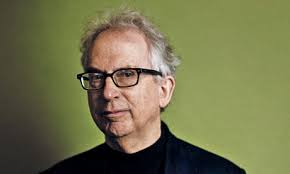
© Flora Hanitijo
KEVIN BROCKMEIER: I begin to recognize myself in my reading choices around age nineteen, when I discovered Peter Carey’s story collection The Fat Man in History by chance the summer after my freshman year of college. Something about its conjoined flights of acidity and sentiment, the precision of its prose, and the use it made of its fantastic conceits offered the perfect introduction to contemporary literature for a lifelong science fiction reader like myself. The book is Carey’s very earliest work, and I understand he himself thinks rather little of it, but I owe it a great debt. Certainly it changed what I imagined I could do with my own writing. I think now that I was probably poised at the door already, just waiting for the right author to give me a nudge, but Carey’s was the book that opened the way to a world of pleasurable reading for me.
MICHAEL CHABON
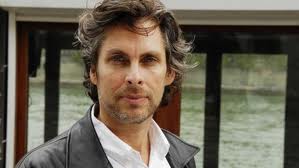
© Ulf Anderson
L. ANNETTE BINDER: I first read Michael Chabon’s Wonder Boys in 2003, on a flight from Boston to LA, and I laughed so hard that my husband had to elbow me because I was disturbing the other passengers. I finished the book on that flight and promptly started it again from the beginning. I had only recently started writing fiction at that point in my life, and something about the rococo prose, the sheer joy of it, and the empathy on the page pulled me in. I’ve returned to the novel many times since. It’s one of the few pieces of fiction I can read when I’m hard at work on the first draft of one of my own stories or novels, and I’ve probably read it dozens of times by now. There’s no predicting which novels will linger with you. A technically flawless piece of writing can impress while you’re reading and then leave you unmarked. Chabon’s Wonder Boys has both stunning prose and an incredibly long half-life, and for me much of its staying power goes back to empathy. Love your characters even when—especially when—they mess up. Chabon’s work taught me this early on, and this idea continues to guide me today.
JENNIFER DUBOIS: This is a passage from Michael Chabon’s The Amazing Adventures of Kavalier and Clay that I copied it down during my sophomore year of college—back when I was a political science and philosophy major who was reading fiction erratically and writing it very rarely:
A surprising fact about the magician Bernard Kornblum, Joe remembered, was that he believed in magic. Not in the so-called magic of candles, pentagrams and bat wings…Not in astrology, theosophy, chiromancy, dousing rods, séances, weeping statues, werewolves, wonders, or miracles. All these Kornblum regarded as fakery far different—far more destructive—than the brand of illusion he practiced, whose success, after all, increased in direct proportion to his audience’s constant, keen awareness that, in spite of all the vigilance they could bring to bear, they were being deceived. What bewitched Bernard Kornblum, on the contrary, was the impersonal magic of life, when he read in a magazine about a fish that could disguise itself as any one of seven different varieties of sea bottom, or when he learned from a newsreel that scientists had discovered a dying star that emitted radiation on a wavelength whose values in megacycles approximated [pi]. In the realm of human affairs, this type of enchantment was often, though not always, a sadder business—sometimes beautiful, sometimes cruel. Here its stock-in-trade was ironies, coincidences, and the true portents: those that revealed themselves, unmistakable and impossible to ignore, in retrospect.
At the time, I knew I was encountering something profound—a piece of fiction that expressed a feeling I’d had, but never articulated, about my own sense of wonder in the world. I look back now and, with all the sorcery of hindsight, realize that of course this passage was also capturing else that would come to matter to me a great deal: life gives us retrospective portents—but, often enough, only stories let us see them.
STUART NADLER: Michael Chabon, whose work I love, and whose talent I admire, writes staggeringly good sentences, the kind I need to stay away from before I sit down to write, but the kind I think every writer wishes they could whip up as easily as it seems he whips them up. He’s a perfect example of a writer whose books I look forward to as a reader, but not necessarily as a writer––he’s so good that I have that increasingly rare experience of forgetting that I’m a writer when I read them. This is always the problem when you spend so much time doing anything, that you become attuned to the seams in the construction. Reading someone like Chabon, or similarly, someone like John Irving, the seams disappear.
ETHAN RUTHERFORD: Michael Chabon has won just about every literary award imaginable, and won them young. Deservedly so, I would argue—his novels are ambitious, funny, engaged, and impressively big; his sentences coil unexpectedly; his paragraphs are propulsive; disparate narrative threads are braided together with precision; his metaphors bloom. His characters do that thing you always hope your own characters will—they walk off the page, hang around after you close the book. After reading his best novels—I’m thinking here of Wonder Boys, The Amazing Adventures of Kavalier & Clay, and The Yiddish Policeman’s Union—you feel that what you’ve read is a story about his particular characters, rather than a book by an author using his characters to tell a story. His work is colorful, deeply saturated with nostalgia (though whose nostalgia is an interesting question), and indulges in his obsessions—comic books, detective stories, vinyl records. They are fun novels, but they are not cartoonish.
The quality of his work isn’t in doubt, nor is his popularity as a novelist. His influence on the next generation of writers, though, I think has less to do with the work itself than his selection of the fictive milieus his characters inhabit. In each book he’s delved deeply into the dusty corners of what some people might call pop-culture detritus and genre—comic books, the alternate history detective story, the barbarian saga—and elevated those personal obsessions into art. He’s certainly not the first writer to do this—David Foster Wallace is the most obvious example of someone who does a similar thing—but I’d argue that Chabon is the most generous in his approach, and the most committed to breaking down the barriers of “what serious novels are supposed to be about.” Where other writers dip into pop-culture in order to ironically shame or mobilize a critique about “consumption” and “junk” and the ways in which the crap we were fed as kids in fact shackles our own creativity and individuality, with his novels Chabon seems to be saying: no, no, wait a minute. This “junk” is important, it can be the stuff of imagination, the environment in which a story can begin, find its footing, become real, and break your heart. He’s also saying: here, you can do this too. His enthusiasm is infectious, and I think the greatest gift he’s given to the many young writers who are among his legion of fans is the permission to return to and celebrate those first loves—often the ones we were told we needed to abandon in order to grow up—and find the story there. Does this mean it’s easy? Not at all. But he has broadened the definition of where a beginning writer can—and should—look for inspiration, and I think that permission will echo for years in the many novelists who are now writing in his wake.
SANDRA CISNEROS
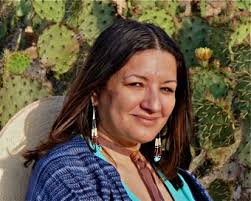
© Alan Goldfarb
RAMONA AUSUBEL: In tenth grade I convinced my parents to let me switch from the big public high school to a private school that I’d discovered. It was brand new—I would be part of the inaugural class—and very, very small. There were just a few of us in the whole high school, and, as it turned out, there weren’t very many teachers yet, either. I recall spending a fair amount of time wandering through the sagebrush—this was northern New Mexico—to the railroad tracks or sitting around outside smoking cigarettes (an activity for which you needed a permission slip from your parents, which I had forged). At some point, a Spanish teacher arrived. Maybe she taught us some vocabulary, but I don’t remember that part. What I remember is that she gave us copies of The House on Mango Street by Sandra Cisneros. I fell completely in love with the book. I loved the language, the precision, the short vignettes. I loved how, through the eyes of the main character, the regular old world was all new. I read it many times over.
Before that, my reading experiences had been divided in two: at home, I read or was read to out of great old storybooks, which I loved; at school I was assigned books out of which I needed to extract some kind of information for a grade. In this case, I have no memory of talking about the book in class or doing any assignments around it. This meant that it was a private pleasure. I had no idea at the time that that The House on Mango Street was commonly assigned reading in big classrooms. I did not think of it as “required.” It felt as if the book got dropped into my hands out of nowhere—no one was tracking my progress, no one was expecting me to perform—and my experience was my own. It made me want to write my own versions of that. I do believe I wrote some very terrible imitations, though thankfully they were lost in the hard-drive of our family’s first hulk of a computer. Still, Cisneros’s language, the wildness and realness of that place, and the pleasure I took from being there, stuck with me.
It was not long before my dad found out that I’d forged his signature on the smoking permission slip and my parents became impatient with the lack of school going on at school, and they pulled me out. I was only there for a few weeks, but I was there to fall in love with a book, and with the writing in the book, not in a class where I would be asked to write a five-paragraph-essay about the theme, or where I might have been influenced by another students’ dislike of the novel, but all by myself. That, as much as the story itself, mattered. It was all pleasure. Language was a way out into the world and a way into myself. That has never left me.
MANUEL MUNOZ: Sandra Cisneros’s The House on Mango Street is everywhere on American high school curricula these days (and she even has two schools named after her), but back in 1988, the book was a small-press offering from Arte Publico of Houston. I got a copy while attending a summer enrichment program for low-income students at UC Santa Cruz. We were asked to do imitations, and I remember choosing "My Name” as my starting point. Whatever I did, the graduate student who was instructing the class was delighted with it. She was one of the first people to suggest to me that I could be a writer and was among the first to suggest to me that I should write about place. The House on Mango Street became a touchstone for me all through college for that reason, though it took well into graduate school for me to finally shake off all the baggage surrounding “write what you know.” That adage carries the whiff of early, unformed storytelling, suggesting the writer hasn’t gone through the steps of cleanly separating fact from fiction. But, for me, it’s also a reminder that I’m one of the few on the larger literary scene who knows this particular world intimately. I’d rather speak to it than leave it in the dust.
J.M. COETZEE
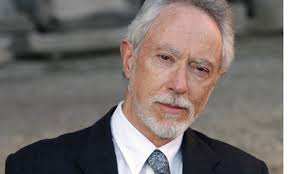
© Tiziana Fabi
JOSH WEIL: The bravery he shows in his work has affected me significantly. True, some of it goes back to his narrative inventiveness (particularly in The Life and Times of Michael K), but mostly, when I read his work, I’m overwhelmed by the unflinching, almost harsh way that he forces the uncomfortable to light, forces himself to deal with it, and the reader to confront it. I don’t think I’ve ever pushed quite as hard as he does in that way, but I know that I want to, that I should, that his work seems to lurk behind me, reminding me, always, of what art operating at the highest level can do. Which, I suppose, is what all the best influences do.
MICHAEL CUNNINGHAM
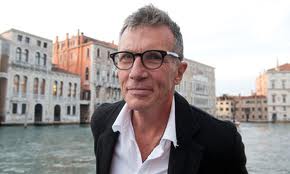
© Graziano Arici
LISA BORDERS: I was born in the early 1960s, on the cusp of two generations: the Baby Boomers and Generation X. By the time I went to graduate school for creative writing, from 1988 to 1990, the voices of my generation were referred to as the literary brat pack: Jay McInerney, Tama Janowitz, Bret Easton Ellis. And while I enjoyed some of their books, the tone of cool detachment so prevalent in their works didn’t really speak to me. Neither did the stories and novels of Robert Coover and Donald Barthelme that were held up as benchmarks in my writing program.
I had a romantic writing temperament in an ironic age; in one of my classes The Great Gatsby—an all-time favorite—was dismissed as sentimental. Both my reading and writing sensibilities leaned toward traditional storytelling, characters with both heart and brain, evocative, lyrical sentences. But it seemed the kind of writing I admired was out of fashion.
Michael Cunningham’s story “White Angel” came to me in the midst of all this, published in the 1989 Best American Short Stories. It was nothing short of a revelation, an example of everything I wanted to do as a writer: the lush, sensual prose; the masterful evocation of setting in terms of both time and place; the compelling, heartbreaking characters. Cunningham’s writing was the exact opposite of what I was being taught in my postmodernist-worshipping, experimentalist-touting writing program, and he became my benchmark. If I could write even one sentence as beautiful as any sentence in “White Angel,” I’d be on my way.
The novel from which “White Angel” was excerpted, A Home at the End of the World, was published in 1990. This was during my post-graduate year of temp jobs and economic desperation, and I rarely bought hardbacks because of their cost, but I bought Cunningham’s novel as soon as it came out. I devoured it quickly and then reread it, slowly.
The novel featured everything I’d loved about Cunningham’s short story, but it contained a larger revelation: the book was about love and connection, about characters without families forming their own. It’s a theme that resonated with me personally, and it’s one I’ve explored in both of my own novels; but back in that era of postmodernism, when everything seemed to be about the fracture of relationships, I can’t overestimate how groundbreaking it felt to read about characters who were finding new ways to connect, and to love.
Cunningham is, of course, best known and most revered for his Pulitzer Prize-winning novel The Hours, published eight years after A Home at the End of the World. Although I cherish The Hours, it will never hold the place in my heart occupied by A Home at the End of the World. But then, one never forgets one’s first true love.
ANDREW PORTER: I first discovered Michael Cunningham’s work back in college when my creative writing professor assigned us his famous short story, “White Angel,” a story that I ended up reading and then rereading close to a dozen times that semester. At that time, I didn’t know a lot about contemporary fiction, but I knew what I liked, and what I liked back then, more than anything else, was beautiful writing. I liked stories that read like tightly crafted prose poems, and I liked writers who seemed to put tremendous care and thought into each and every sentence.
This was what had initially drawn me to the work of Raymond Carver, a writer whose influence could be seen in almost everything I’d written to that point, but in the case of Cunningham’s writing I think what I was responding to was something a little different, something I hadn’t seen before. His writing was spare and elegant and economical like Carver’s, but it was also poetic, and vibrant and surprising. And there was also a certain musicality to it, a sensitivity to rhythm and sound and language that made me want to reread his sentences in the same way I used to listen to certain songs, as a teenager, over and over and over again.
For years afterward, I think I looked at “White Angel” as a kind of model of everything I wanted to achieve in the short story form. It was not only emotionally honest and resonant, but it was also perfectly constructed and, to my mind, perfectly written. In fact, before I began my own writing routine each day I’d often read a few pages of that story as a kind of reminder of what I wanted to achieve in my own work, of what I aspired to, even though I doubted very much that I’d ever be able to write something so elegant or pristine or moving. And what’s funny is that twenty years later, when I finally decided to take a break from writing short stories for a while and work on a novel, I found myself doing the exact same thing with The Hours, rereading certain passages of that book as a way of getting myself into the right mindset to write.
There are of course many other things I could say about Michael Cunningham’s work. I could talk endlessly about the richness and the depth of his narrative world, the intuitive genius of his storytelling approach, the complexity of his characterization, but at the end of the day when I think about his fiction what I think about most are his sentences, the lyrical, surprising grace of them. And I don’t know that there’s a greater compliment I could pay to him, or any other writer, than to say that at the beginning of each day, when I sit down to write, it’s his work that I turn to more than any others’, that it’s his sentences and paragraphs that I look to for inspiration and instruction and guidance and that I revisit them as a way of reminding myself why it is I decided to write in the first place.
–
Bret Anthony Johnston, author of Remember Like This: A Novel, and Corpus Christi: Stories
Stuart Nadler, author of Wise Men: A Novel, and The Book of Life: Stories
Anna Solomon is the author of the novel The Little Bride
Urban Waite is the author of the novels Sometimes the Wolf, The Carrion Birds, and The Terror of Living.
Kevin Brockmeier is the author of A Few Seconds of Radiant Filmstrip: A Memoir of Seventh Grade, The View from the Seventh Layer: Stories, The Illumination, The Brief History of the Dead, The Truth About Celia, Things that Fall from the Sky: Stories
L. Annette Binder is the author of Rise: Stories
Jennifer DuBois is the author of the novels A Partial History of Lost Causes, and Cartwheel
Ethan Rutherford is the author of The Peripatetic Coffin and Other Stories
Ramona Ausubel is the author of A Guide to Being Born: Stories, and No One is Here Except All of Us
Manuel Munoz is the author of What You See in the Dark: A Novel, The Faith Healer of Olive Avenue: Stories, and Zigzagger: Stories
Josh Weil is the author of The Great Glass Sea: A Novel, and The New Valley: Novellas
Lisa Borders is the author of the novels The Fifty-First State and Cloud Cuckoo Land
Andrew Porter is the author of In Between Days: A Novel, and The Theory of Light and Matter: Stories
Lettering by Caleb Misclevitz




